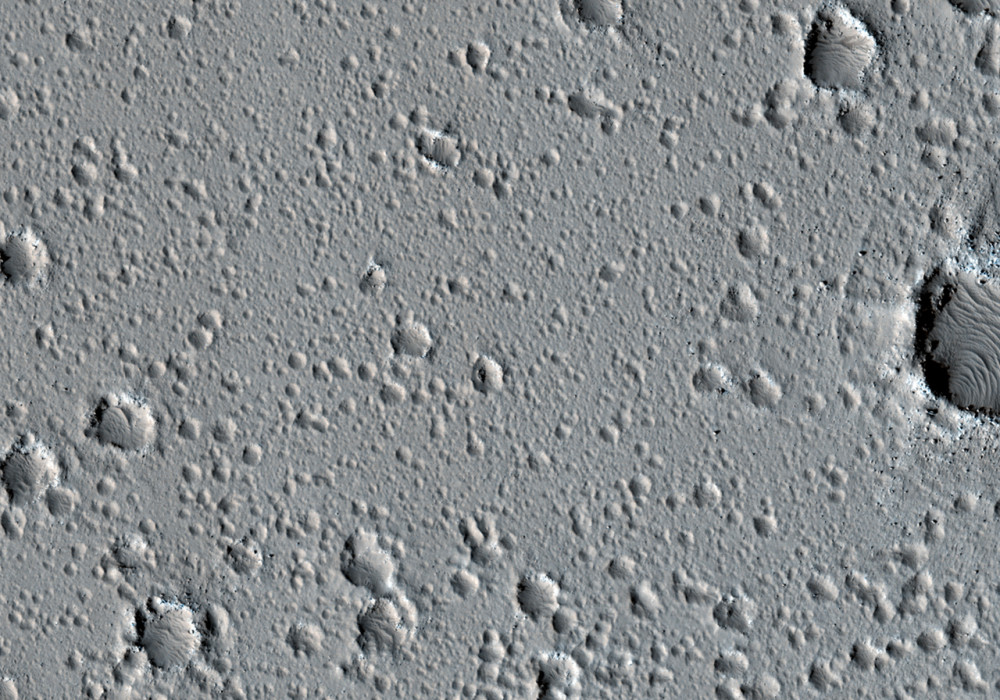This image ( see subimage ) shows a cluster of new impact craters near 5 meters in diameter, that formed between 1977 and 2003 based on earlier images from other missions showing the presence or absence of a dark spot.
The new craters have distinctive colors and morphologies, and are surrounded by the much larger darkened spot produced by the airblast. The background terrain is nearly saturated with craters up to about 100 meters in diameter, which may be secondaries from a large (approximately 30 kilometers in diameter) well-preserved impact crater about 170 kilometers to the Northwest.
A single primary crater several kilometers or more wide can create millions of secondary craters from far-flung ejecta.
Written by: Alfred McEwen (9 February 2011)
More info and image formats at http://hirise.lpl.arizona.edu/ESP_020842_2030
Image: NASA/JPL/University of Arizona
